15 Vintage Photos That Show What American Car Manufacturing Looked Like 100 Years Ago

Ah, the roaring days of vintage car manufacturing—where steel met soul and factories thrummed with the heartbeat of American ambition.
My grandpa used to spin tales of those gritty golden days, where every clang of metal and hiss of steam meant progress was in motion. The air was a cocktail of oil, sweat, and dreams, and every worker wore their grease like a badge of pride.
These weren’t just assembly lines—they were cathedrals of craftsmanship, churning out chrome-covered dreams on four wheels. And oh, the chaos! Between trial-and-error engineering and coffee-fueled problem-solving, it sometimes sounded more like a sitcom than a serious workplace—honestly, not unlike my family’s Thanksgiving dinners.
These 15 vintage snapshots don’t just show old cars being built; they capture a whole era of innovation, determination, and beautifully orchestrated industrial madness. So buckle up, pop the clutch, and let’s cruise back through a time when America was building more than just cars—it was building legends.
1. Assembly Lines
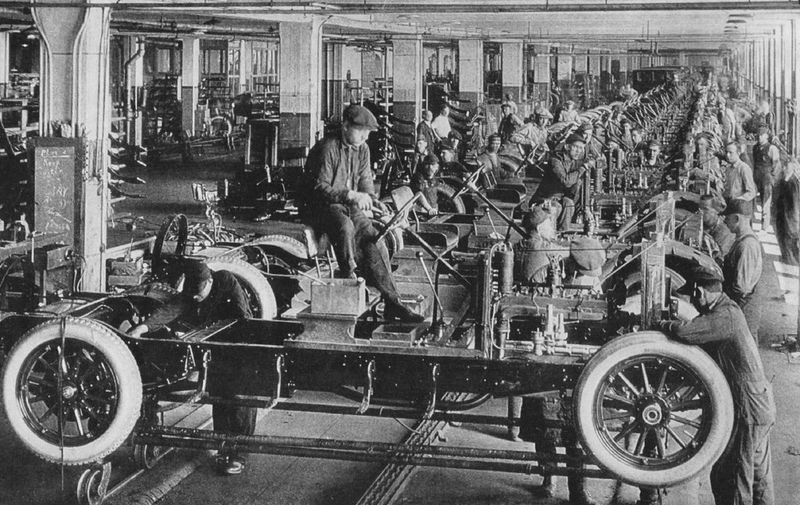
Imagine a mechanical conga line, where cars were built faster than you could say ‘Model T.’ Thanks to Henry Ford’s assembly line innovation, vehicles rolled out at lightning speed, much to the delight of eager buyers. Workers, clad in grease-stained overalls, danced around their stations like choreographed performers in an industrial ballet. Every screech of a wrench and thud of a mallet was part of the rhythmic symphony of production.
Despite the lack of automation, these hardworking folks had the assembly down to an art form. With each completed car, they contributed to the era’s booming automotive enthusiasm. It’s mesmerizing to see how efficiency was achieved with just human hands and simple tools. If only my kitchen was as organized during meal prep!
These assembly lines didn’t just produce cars; they manufactured dreams of freedom and speed, just as Ford envisioned. It was a revolution on wheels!
2. Manual Labor
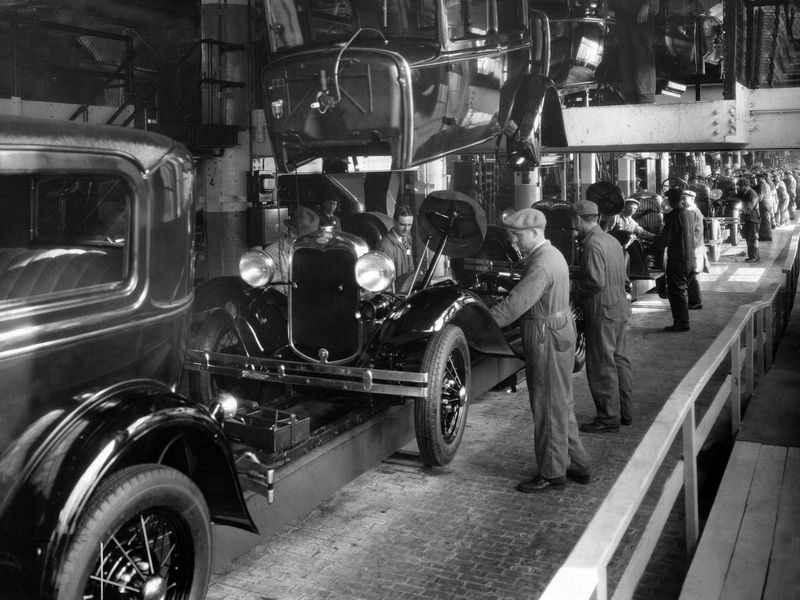
Manual labor was the heartbeat of the early car manufacturing era, a world where sweat and skill were the main ingredients. Workers wielded hammers and welding torches like artists with brushes, each spark a testament to their dedication. It was a time when every rivet and joint was a product of human hands, a stark contrast to today’s automation-driven factories.
Inside these bustling factories, the air buzzed with the energy of craftsmen and laborers who carried the torch of progress. Their efforts were the backbone of the automotive boom, and they wore their calluses like badges of honor.
Imagine the satisfaction of seeing a car come to life, piece by piece, under your skilled hands. That’s the spirit of manual labor, where every stroke of the hammer was a step closer to the open road. If only I could channel such dedication when fixing my own car!
3. Grease-Stained Overalls
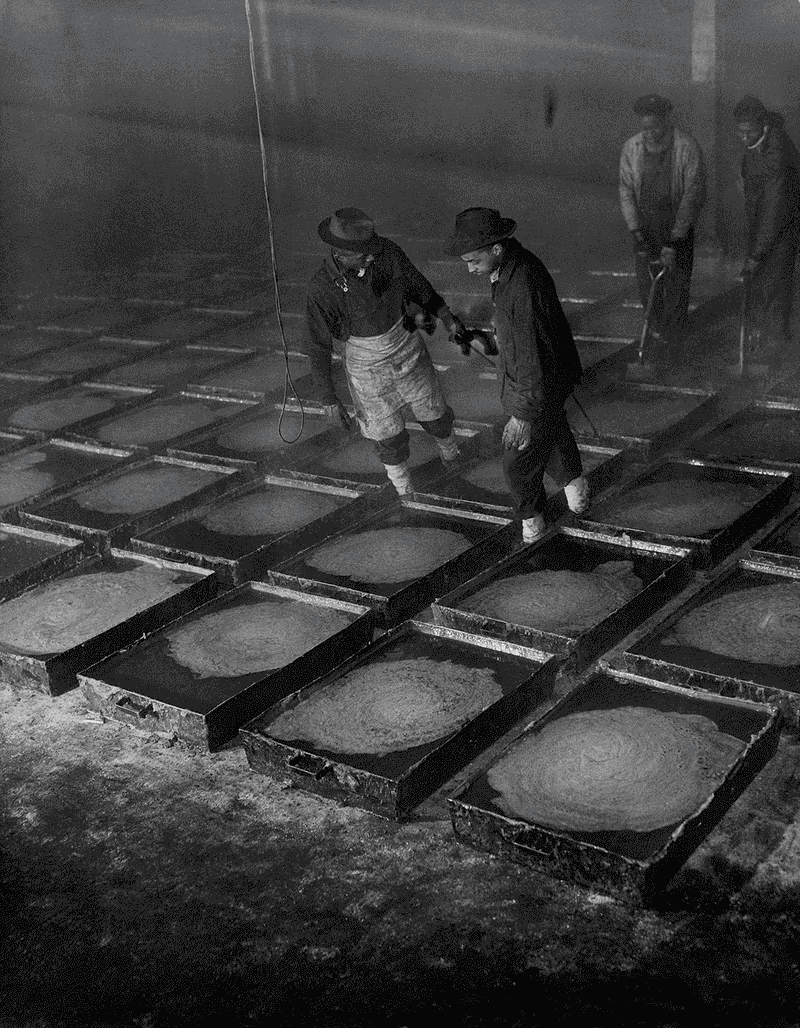
In the world of vintage car manufacturing, fashion took a backseat to function, and grease-stained overalls were all the rage. These rugged garments were the unofficial uniform of the hardworking factory worker, proudly worn like medals of honor.
The stains on these overalls were more than just marks of toil; they were badges of dedication. Each smudge told a story of tireless hours spent bringing automobiles to life. It’s as if these workers donned superhero capes in disguise, ready to save the day from mechanical mayhem.
Picture a team clad in matching grease-streaked attire, working in harmony to create the cars of the future. Their overalls may not have been stylish, but they were a symbol of grit and determination. If only my everyday attire could withstand such wear and tear!
4. Clunky Machinery
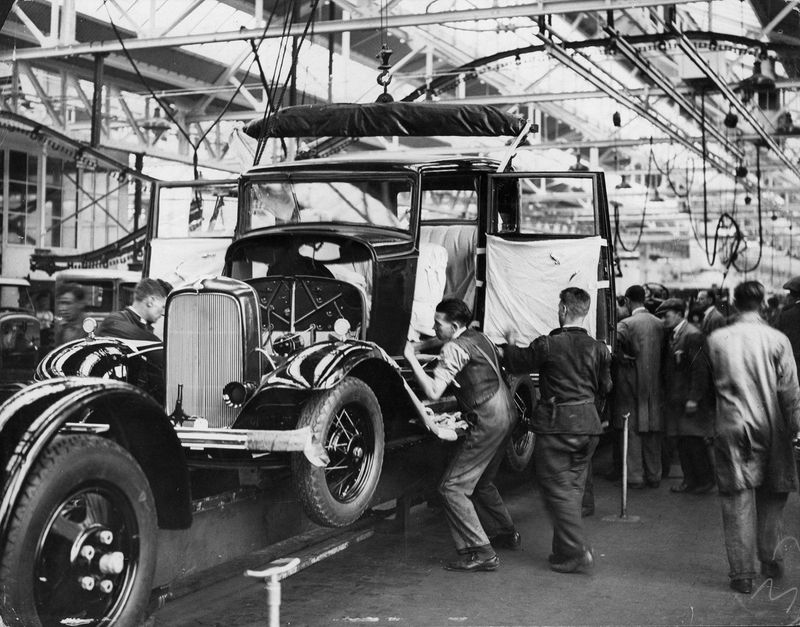
Step into the cacophonous world of clunky machinery where massive belt-driven contraptions whirred, clanged, and occasionally displayed their flair for dramatic breakdowns. These mechanical monsters were the backbone of early car manufacturing and often had minds of their own.
Imagine the symphony of noise as gears turned, belts snapped, and the occasional machine tantrum brought production to a dramatic halt. These machines were the divas of the factory floor, demanding constant attention and care from the skilled operators.
Despite their quirks, clunky machinery paved the way for the automotive revolution. Their sheer size and power were a testament to human ingenuity. It’s a wonder how workers managed to tame these beasts, much like wrangling a stubborn lawnmower that refuses to start on a Monday morning!
5. No Safety Standards
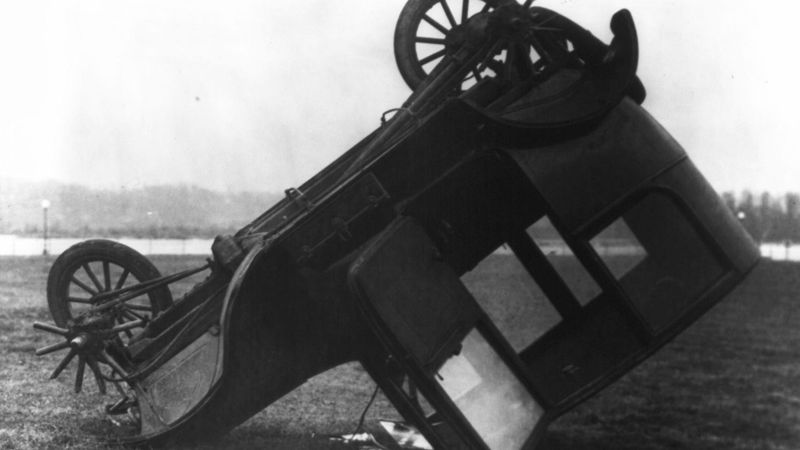
Welcome to a time when safety standards were as elusive as a unicorn in a haystack. Hard hats, eye protection, and steel-toed boots were rare sightings in the factory landscape. Workers braved the industrial jungle with little more than their wits and some sturdy shoes, if they were lucky.
The factory floor was a place where caution was thrown to the wind, and workers danced with danger daily. It makes one wonder if they had a secret handshake or just a really good sense of balance.
Despite the absence of modern safety gear, these brave souls persevered, navigating the hazardous terrain of car manufacturing like tightrope walkers without a net. Their resilience was as impressive as a daredevil’s high wire act. If only my own workplace were as adventurous!
6. Steam and Smoke
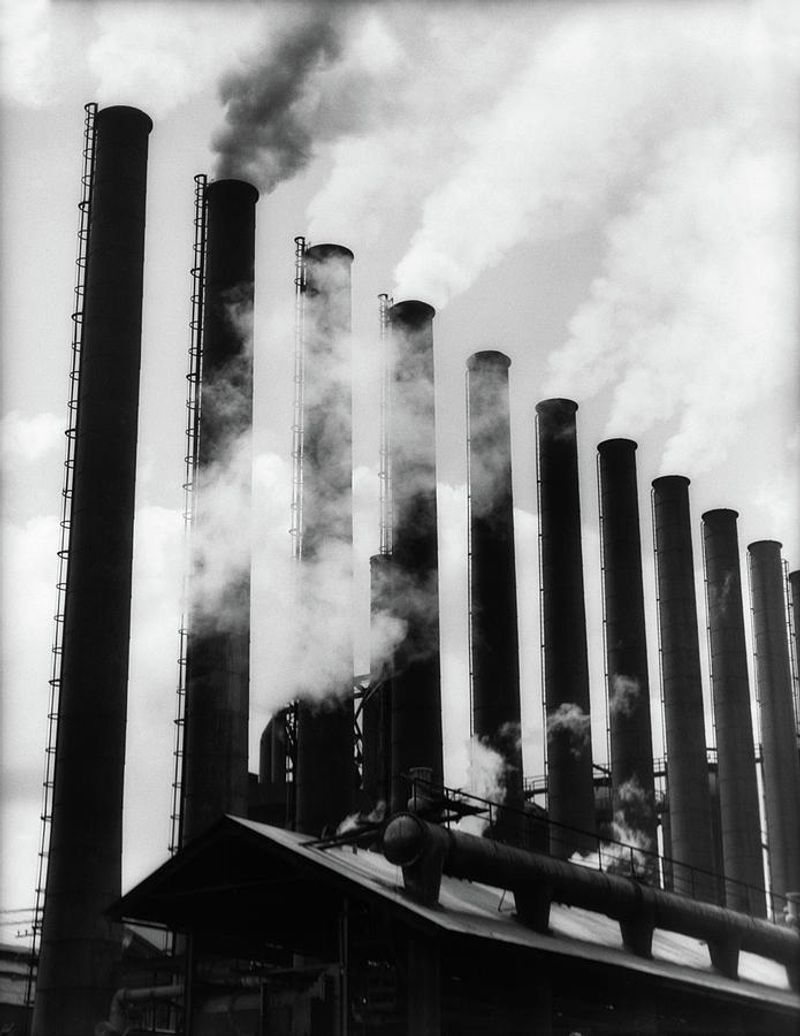
In the factories of yore, steam and smoke hung in the air like an ever-present fog, lending an aura of mystery to the scene. The combination of hot steam and oil vapor created an atmosphere that was part factory, part sauna.
Workers toiled in this steamy haze, their silhouettes barely visible through the thick cloud. Imagine the sensory overload as the clanging of metal mixed with the scent of burning oil in a symphony of automotive creation.
Despite the challenging conditions, these factory workers persevered, driven by the promise of progress. It’s as if they were the original superheroes, thriving in a world that needed a touch of heat and smoke to get things done. If only I could channel their endurance while cooking in a smoky kitchen!
7. Wood and Steel
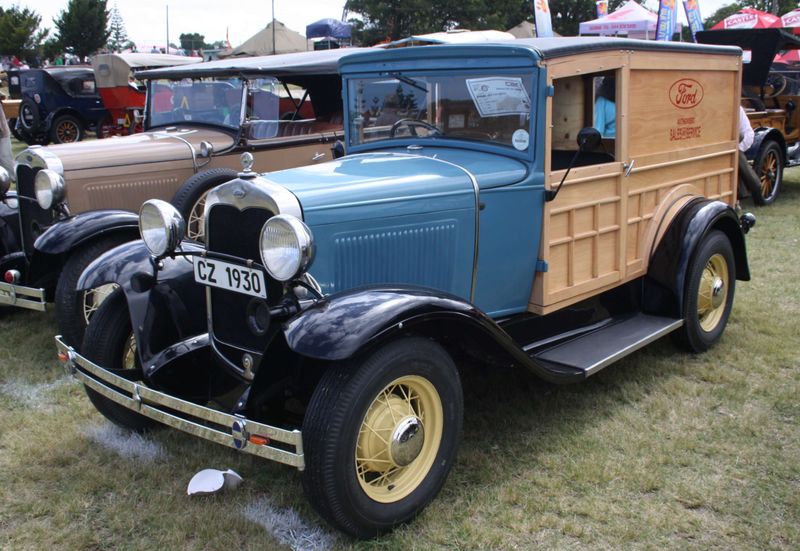
Step into the world of vintage car craftsmanship, where wood and steel combined to create automotive masterpieces that were as sturdy as they were stylish. These cars were built like tanks, designed to withstand the test of time and the rigors of the open road.
Imagine the skilled hands of craftsmen as they meticulously shaped wooden frames and riveted steel panels, creating a harmonious blend of strength and elegance. Each car was a work of art, a testament to the craftsmanship of the era.
In today’s world of sleek, aerodynamic designs, it’s hard to fathom the charm of these wooden-framed beauties. They were the original SUVs, built to tackle any terrain with grace and style. If only my woodworking skills could match theirs!
8. Horses Still Delivered Parts
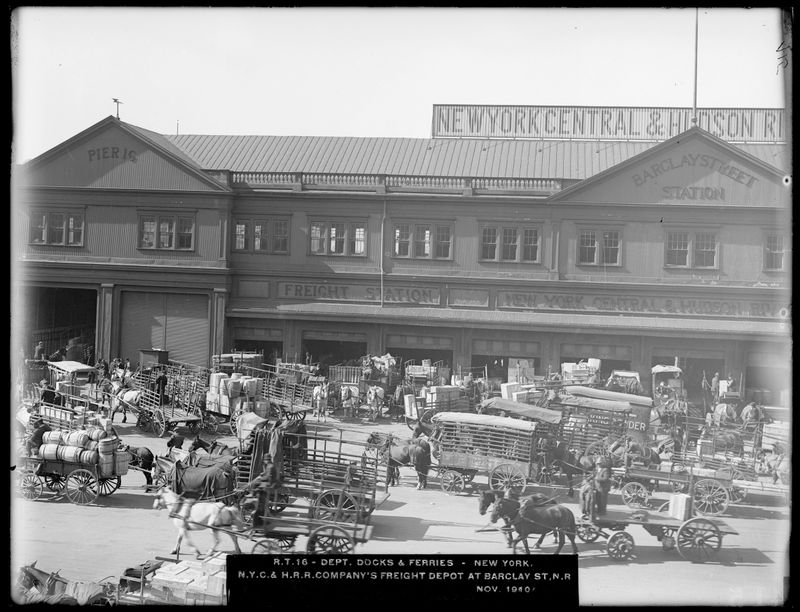
Imagine the irony of it all: in the age of the automobile, car parts were still delivered by trusty steeds pulling wagons. It was a curious blend of old and new, as factory workers awaited the arrival of these horse-drawn deliveries like children expectantly waiting for the ice cream truck.
The sight of horses clopping up to the factory doors with their loads of metal and machinery was a scene that bridged two eras. It was a reminder that while cars were the future, horses were still very much a part of the present.
This odd juxtaposition of horsepower and horsepower was a testament to the transitional period of the time. It’s like ordering a pizza delivery and having it arrive by bicycle courier—it gets there, but not quite in the way you’d expect!
9. Leather Interiors by Hand
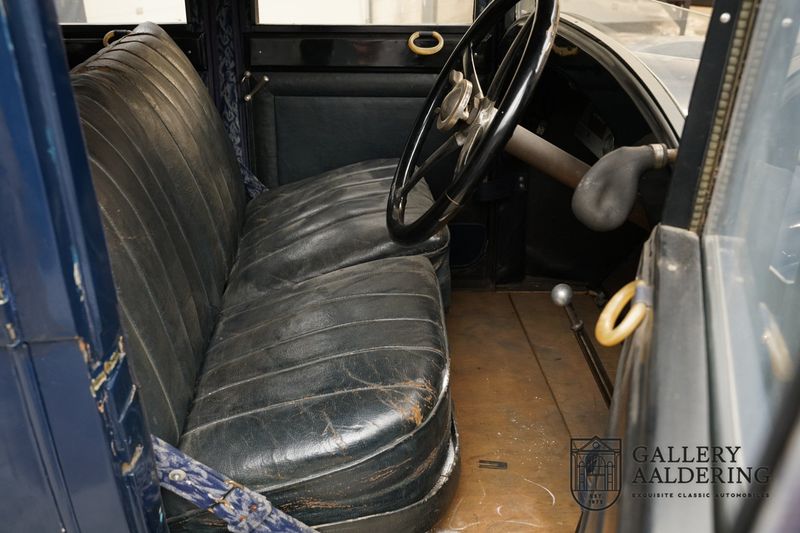
Ah, the art of leatherworking, where craftsmen transformed raw hides into luxurious car interiors fit for royalty. These skilled artisans stretched, stitched, and smoothed leather seats with precision, turning each car interior into a plush haven.
Picture the care and attention to detail as these craftsmen labored over each seat, ensuring the leather was perfectly tailored and free of imperfections. It was a process that demanded patience and skill, akin to upholstering a throne for the open road.
In an era when car interiors were more than just functional spaces, these leather seats became symbols of luxury and craftsmanship. They were the original bucket seats, cradling passengers in comfort and style. If only I could upholster my couch with such finesse!
10. All-American Pride
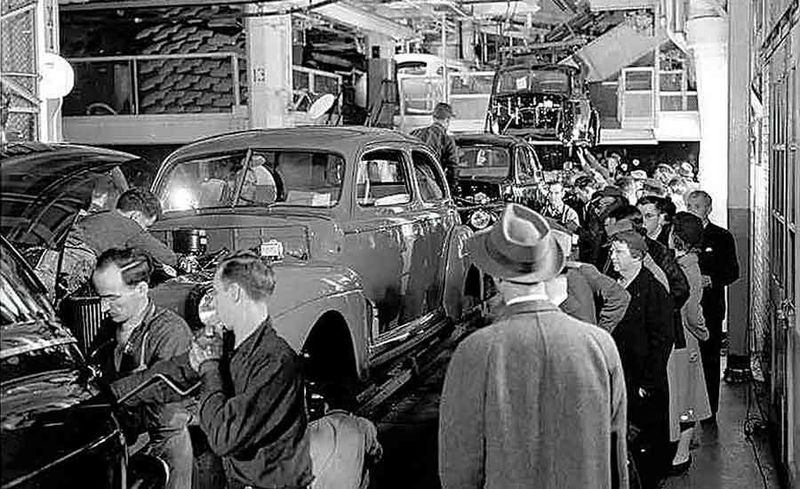
Working in a car factory was a badge of honor, a symbol of All-American pride that resonated far and wide. These workers were not just building cars; they were forging the future, one vehicle at a time.
Picture a group of proud factory workers standing beside freshly minted automobiles, their faces beaming with a sense of accomplishment. They were the unsung heroes of the automotive revolution, their labor helping to shape the destiny of a nation.
In the bustling factories of the era, every car produced was a testament to hard work, ingenuity, and the indomitable spirit of the American workforce. It’s like being part of a winning team, where every victory was a shared triumph. If only I could summon such team spirit during my family game nights!
11. Men Dominated the Floor
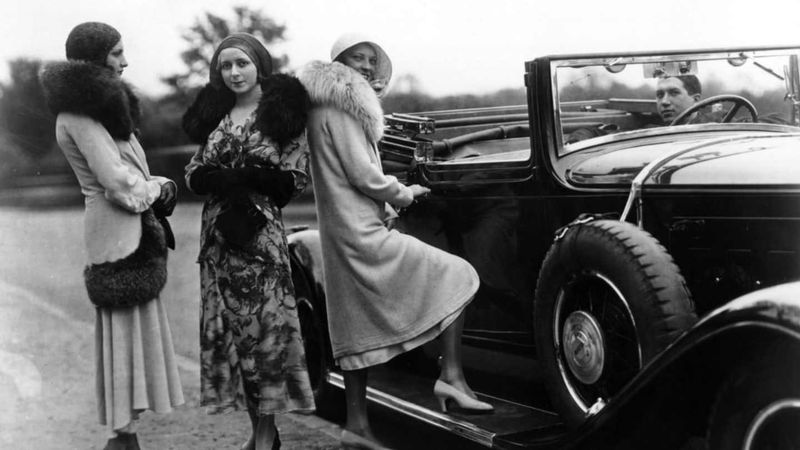
Inside the bustling car factories of the 1920s, men were the dominant force, taking charge of the assembly lines with a sense of purpose and determination. It was a man’s world, where brawn and bravery were prized.
While the factory floors were mostly filled with men, there were moments when women stepped in during the war years, proving their mettle and showing they could do it all too. These trailblazing women left an indelible mark on the industry, shattering stereotypes like glass ceilings.
The era was one of traditional gender roles, yet it laid the groundwork for future generations to follow in the footsteps of those who dared to challenge the status quo. It’s like a game of musical chairs, where the seats are always changing. If only my office meetings were as dynamic!
12. Endless Noise
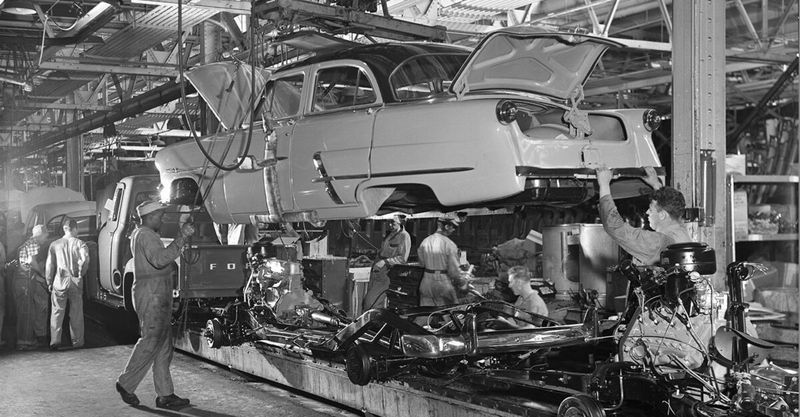
The factories of a century ago were nothing short of a symphony of industry, where the endless noise was both a challenge and an inspiration. The constant hammering, shouting, and engine testing created a cacophony that defined the era.
Imagine the sensory overload as workers navigated a world filled with clanging metal and booming voices. It was an environment where communication often relied on hand signals and nods amidst the chaos.
Despite the relentless noise, the factory floor was a place of camaraderie and collaboration. It was like being part of an orchestra, where every worker played their part in the grand composition of car manufacturing. If only my office had such harmonious teamwork!
13. Gritty Detroit Energy
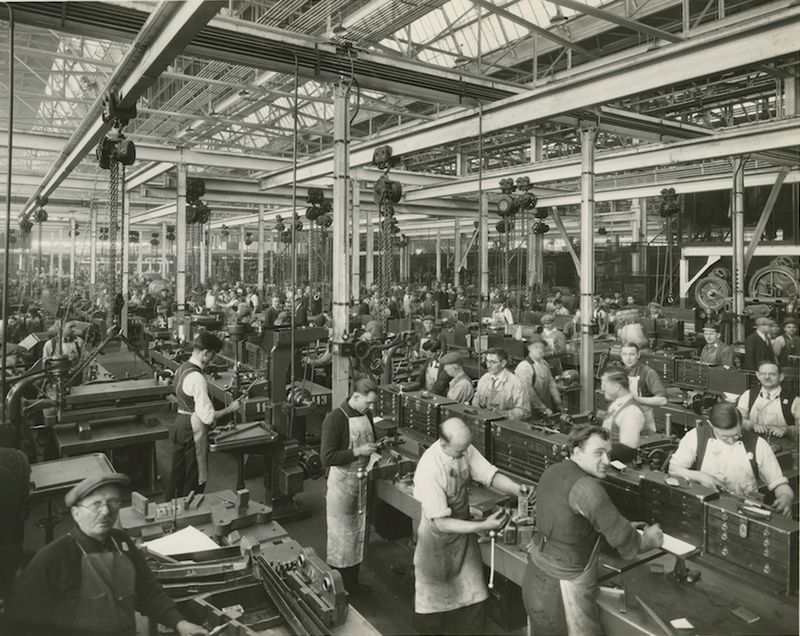
Welcome to the Motor City, where gritty Detroit energy fueled the heart of the car manufacturing world. The city’s pulse beat with the rhythm of industry, a place where smoke, steel, and soul converged to create automotive history.
Picture the bustling streets of Detroit, filled with the sights and sounds of factories churning out cars with relentless determination. It was a city that thrived on the spirit of innovation and resilience.
In this vibrant metropolis, dreams were built on assembly lines, and the promise of a better future drove the workforce to new heights. It’s like a city that never sleeps, where every corner hums with the energy of progress. If only my hometown had such electric vibes!
14. Test Drives on Dirt Roads
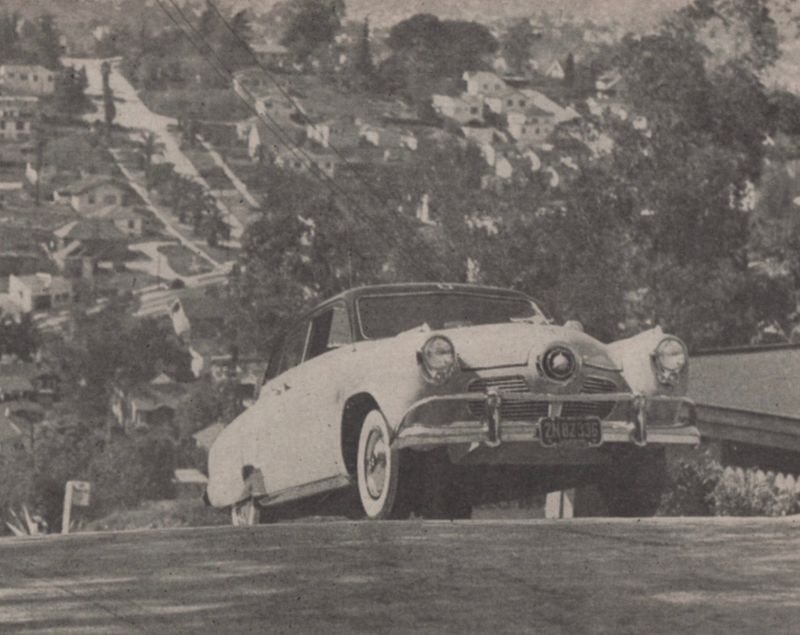
In the early days of car manufacturing, test drives were a real adventure, often taking place on bumpy dirt roads near the factories. It was a time when ‘off-road’ wasn’t a feature but a necessity!
Imagine a brave test driver navigating the rugged terrain with nerves of steel, putting the car through its paces on a makeshift track. These dirt roads were the ultimate proving grounds, where cars had to demonstrate their durability and handling.
The thrill of a test drive back then was like a joyride through uncharted territory, with every bump and jolt adding to the excitement. It’s akin to taking an unpredictable rollercoaster ride, where surprises lurk at every turn. If only my daily commute were as thrilling!
15. Cars Were Status Symbols
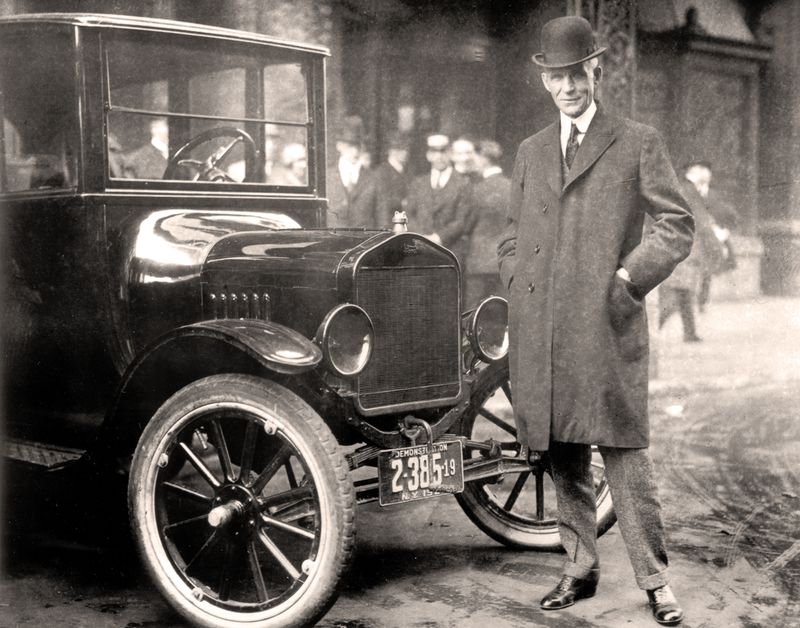
Owning a car in the 1920s was akin to possessing the golden ticket to freedom and prestige. It was a status symbol that spoke volumes about one’s place in society and aspirations for the future.
Imagine a proud car owner standing beside their shiny vehicle, basking in the admiration of friends and neighbors. Cars were more than just transportation; they were statements of success and symbols of modernity.
In a world where automobiles were still a novelty, having a car was like owning a piece of the future. It was the ultimate expression of individuality and ambition. If only my old jalopy could evoke such envy and admiration!
